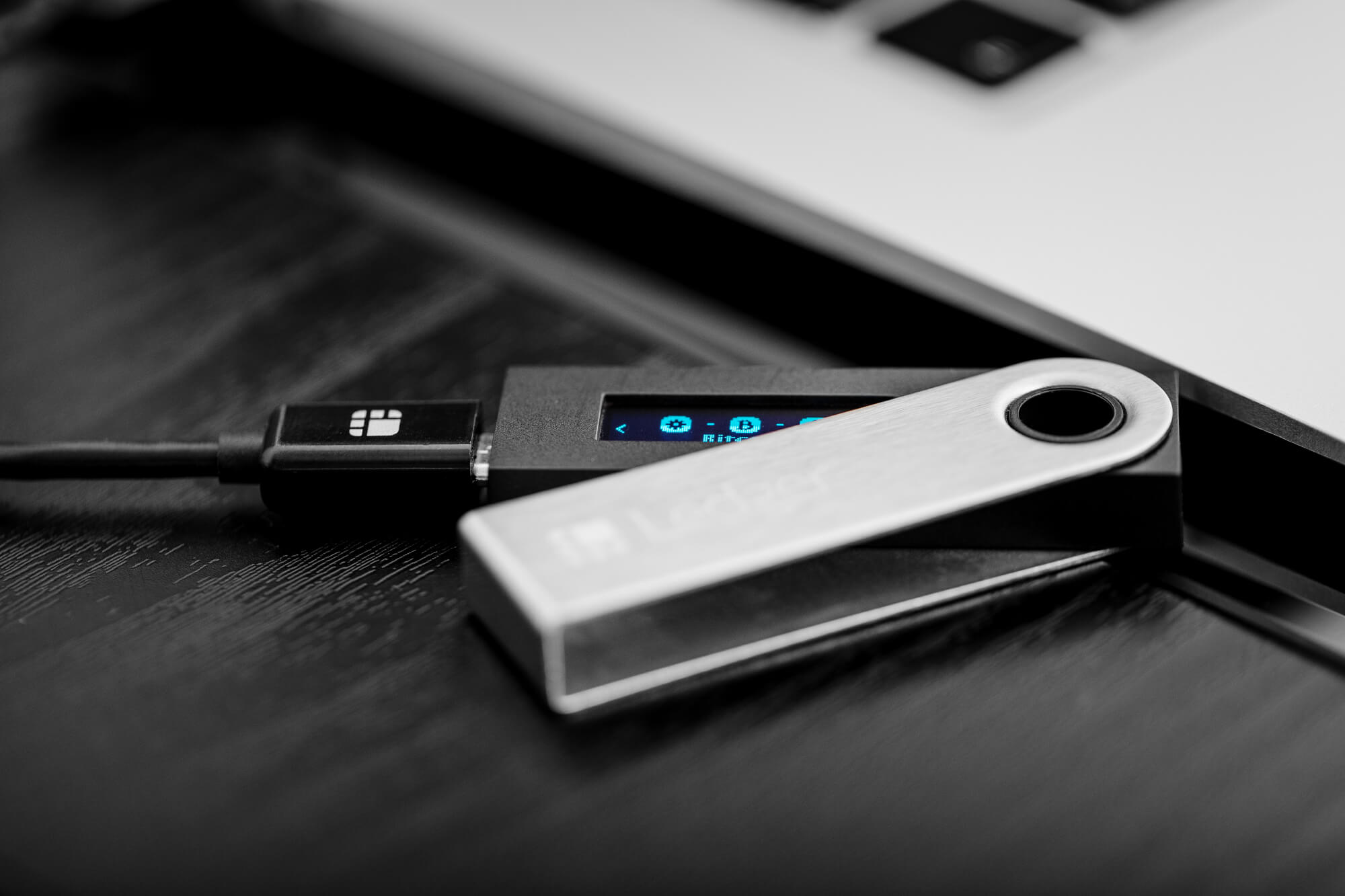Auditing Decentralized Finance (DeFi) transactions in Ledger Live involves reviewing and verifying your DeFi-related activities—such as swapping, staking, lending, or interacting with decentralized applications (dApps)—to ensure accuracy, security, and compliance with your financial goals.

Ledger Live, paired with a Ledger hardware wallet (Nano S Plus, Nano X, Flex, or Stax), provides a secure interface for managing these transactions, but it doesn’t offer a built-in auditing tool specifically tailored for DeFi. Instead, you can leverage its features, export data, and use external resources to perform a thorough audit.
Please download the last update of Ledger Live Application:
1. Ledger Live for Windows 10/11
2. Ledger Live for MAC
3. Ledger Live for Android
Below is a step-by-step guide on how to audit your DeFi transactions in Ledger Live as of February 22, 2025.
Why Audit DeFi Transactions?
- Accuracy: Confirm that swaps, staking rewards, or lending returns match your expectations.
- Security: Detect unauthorized transactions, phishing attempts, or smart contract errors.
- Tax Compliance: Track gains/losses for reporting (e.g., capital gains tax).
- Transparency: Ensure interactions with DeFi protocols align with your records.
Step-by-Step Guide to Auditing DeFi Transactions
Step 1: Understand DeFi in Ledger Live
- Supported DeFi Features:
- Swapping: Via partners like Changelly or ParaSwap (e.g., ETH to USDT).
- Staking: For coins like ETH (via Lido), SOL, ADA, or XTZ—managed directly or through validators.
- Lending: Integration with Compound (e.g., lend DAI, USDT) for interest.
- dApp Access: Through the Discover tab (e.g., Zerion, 1inch)—connect your Ledger to interact with DeFi protocols.
- Security: All DeFi transactions require on-device approval (see “Verifying Transactions”), keeping private keys offline.
Step 2: Connect Your Ledger and Review Transaction History
- Open Ledger Live:
- Launch on desktop (Windows, macOS, Linux) or mobile (iOS, Android).
- Connect Your Ledger:
- USB (all models) or Bluetooth (Nano X)—unlock with your PIN.
- Go to Accounts:
- Click Accounts in the sidebar—select the account tied to your DeFi activity (e.g., “Ethereum 1” for swaps/lending, “Solana 1” for staking).
- Check History:
- Scroll to the Operations or History section—lists all transactions (e.g., “Sent 0.1 ETH,” “Received 50 USDT”).
- Filter by type if available (e.g., “Swap,” “Stake”)—varies by version (e.g., 2.81.0).
Step 3: Verify Transaction Details
- On-Device Confirmation:
- During each DeFi transaction (e.g., swapping ETH for DAI), you approved details on your Ledger (address, amount, fees)—this ensures no tampering occurred at the time.
- Example: “Swap 0.5 ETH to 1,200 DAI” shown on Nano X screen, approved with buttons.
- Match with History:
- Compare Ledger Live’s records with your memory or notes—e.g., did you swap 0.5 ETH on ParaSwap yesterday? Check the timestamp and amount.
- Cross-Check Addresses:
- For dApp interactions, ensure recipient addresses (e.g., smart contracts) match legit protocols—use etherscan.io (Ethereum) or solscan.io (Solana) with your public address from Receive.
Step 4: Export Transaction Data
- Why: Ledger Live’s interface isn’t optimized for deep analysis—exporting provides a detailed audit trail.
- How:
- Go to Accounts > [Your Account] > History.
- Click the export icon (top-right, looks like a download arrow) or Export Operations.
- Choose a format (CSV)—includes date, type (send/receive/swap), amount, address, and transaction ID.
- Save to your device (e.g., “DeFi_Transactions_Feb2025.csv”).
- Note: Staking rewards (e.g., Lido ETH) or lending interest (e.g., Compound) may appear as separate entries—label them for clarity.
Step 5: Analyze Transactions Externally
- Tools:
- Excel/Google Sheets: Import the CSV—sort by date, amount, or type to spot anomalies (e.g., unexpected outflows).
- Blockchain Explorers: Paste transaction IDs into etherscan.io (Ethereum), polygonscan.com (Polygon), or relevant explorers—verify smart contract interactions (e.g., 1inch swap contract: 0x1111…).
- Tax Software: CoinTracker, Koinly, or TokenTax—sync your Ledger’s public addresses (not keys) to calculate gains/losses from DeFi trades.
- What to Look For:
- Swaps: Did you receive the expected token amount minus fees? (e.g., 0.5 ETH → 1,200 DAI, not 1,000 DAI).
- Staking: Are rewards consistent with protocol rates? (e.g., Lido’s 3–5% APR on ETH).
- Lending: Did Compound pay the correct interest? (e.g., 2% APY on 100 USDT = 0.166 USDT/month).
- Unauthorized Activity: Any sends to unknown addresses?
Step 6: Audit Smart Contract Interactions
- Why: DeFi relies on smart contracts—bugs or scams (e.g., rug pulls) can drain funds.
- How:
- In Discover, review dApps you’ve used (e.g., Zerion, Paraswap).
- Check contract addresses on explorers—legit ones (e.g., Compound: 0x3d981921…) are audited and widely known.
- Avoid blind signing—Ledger Live’s clear signing shows human-readable details (e.g., “Swap 1 ETH to UNI”)—reject if unclear.
- Action: If unsure about a contract, research it on DeFi Pulse, RugDoc, or X posts—avoid unverified protocols.
Step 7: Secure Your Setup
- Why: A secure environment prevents future audit issues.
- How:
- Verify Ledger Live’s source (ledger.com/ledger-live) and update it (see “How to Update Ledger Live”).
- Check device authenticity (Get Started > Check My Device).
- Store your 24-word seed offline—never share (see “Why Never Share Your Seed”).
- Use a passphrase (Settings > Advanced > Passphrase on Ledger) for hidden DeFi accounts.
Step 8: Document Findings
- How: Create a report (e.g., spreadsheet or doc):
- Transaction list: Date, type, amount, address, status.
- Anomalies: Unexpected losses, unrecognized addresses.
- Gains: Staking/lending profits (e.g., 0.02 ETH from Lido).
- Why: Prepares you for tax reporting or future audits.
Example Audit
- Setup: Ethereum account “ETH DeFi” on Nano X.
- Transactions:
- 02/15/2025: Swapped 0.2 ETH for 500 USDT (ParaSwap)—verified on-device, confirmed on etherscan.io.
- 02/18/2025: Staked 1 ETH via Lido—0.003 ETH reward received, matches 3% APR.
- 02/20/2025: Lent 100 DAI on Compound—0.16 DAI interest, aligns with 2% APY.
- Findings: All legit—no unauthorized sends detected.
Tips and Troubleshooting
- Missing Transactions: Clear cache (Accounts > Edit > Clear Cache) and resync—check explorer if still absent.
- Gas Fees: High fees (e.g., 0.01 ETH) are normal for DeFi—audit for excessiveness.
- Spam Tokens: Ignore unsolicited ERC-20s—don’t interact unless verified.
- Export Fails: Update Ledger Live or try another device.
Conclusion
Auditing DeFi transactions in Ledger Live involves reviewing your history, exporting data, and cross-checking with explorers or tax tools—since no native DeFi audit feature exists. Your Ledger’s on-device verification ensures transaction integrity, while external analysis confirms outcomes. This process—taking 30–60 minutes—keeps your DeFi activities (swaps, stakes, loans) secure and transparent.
